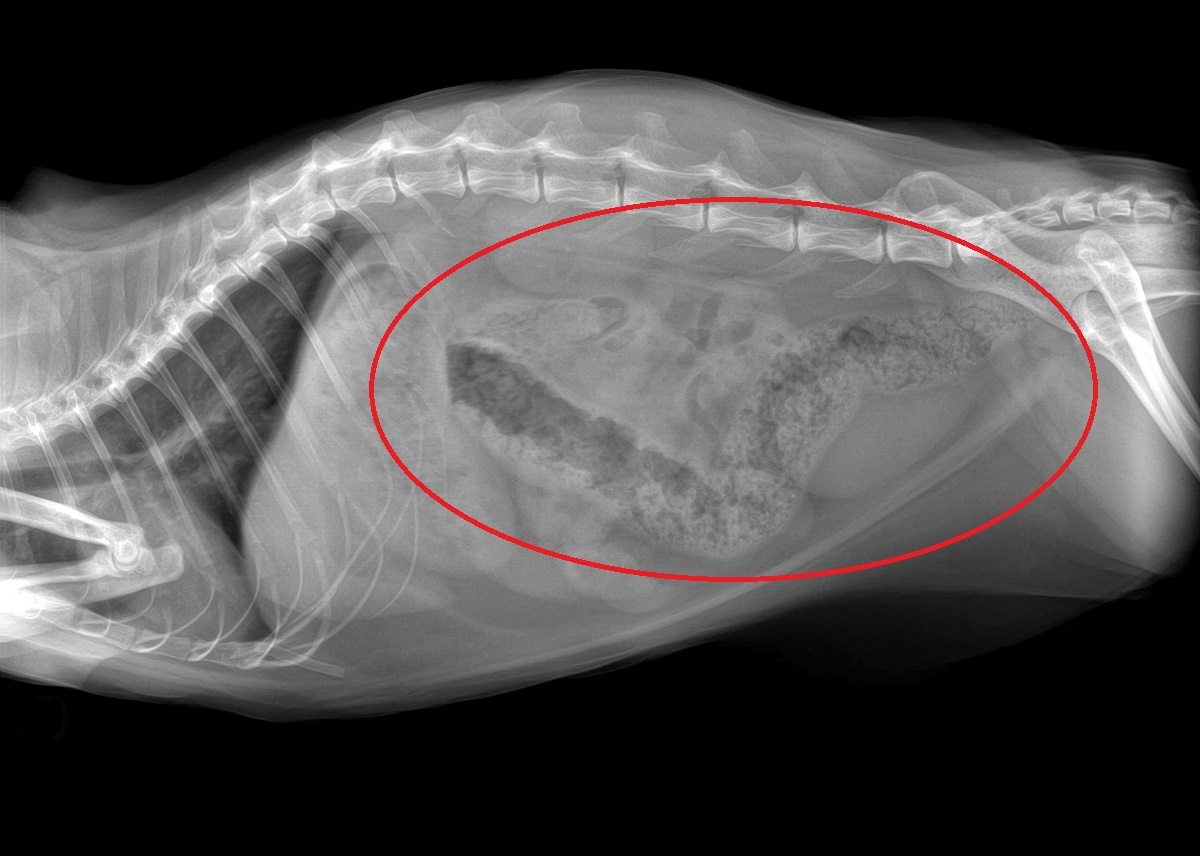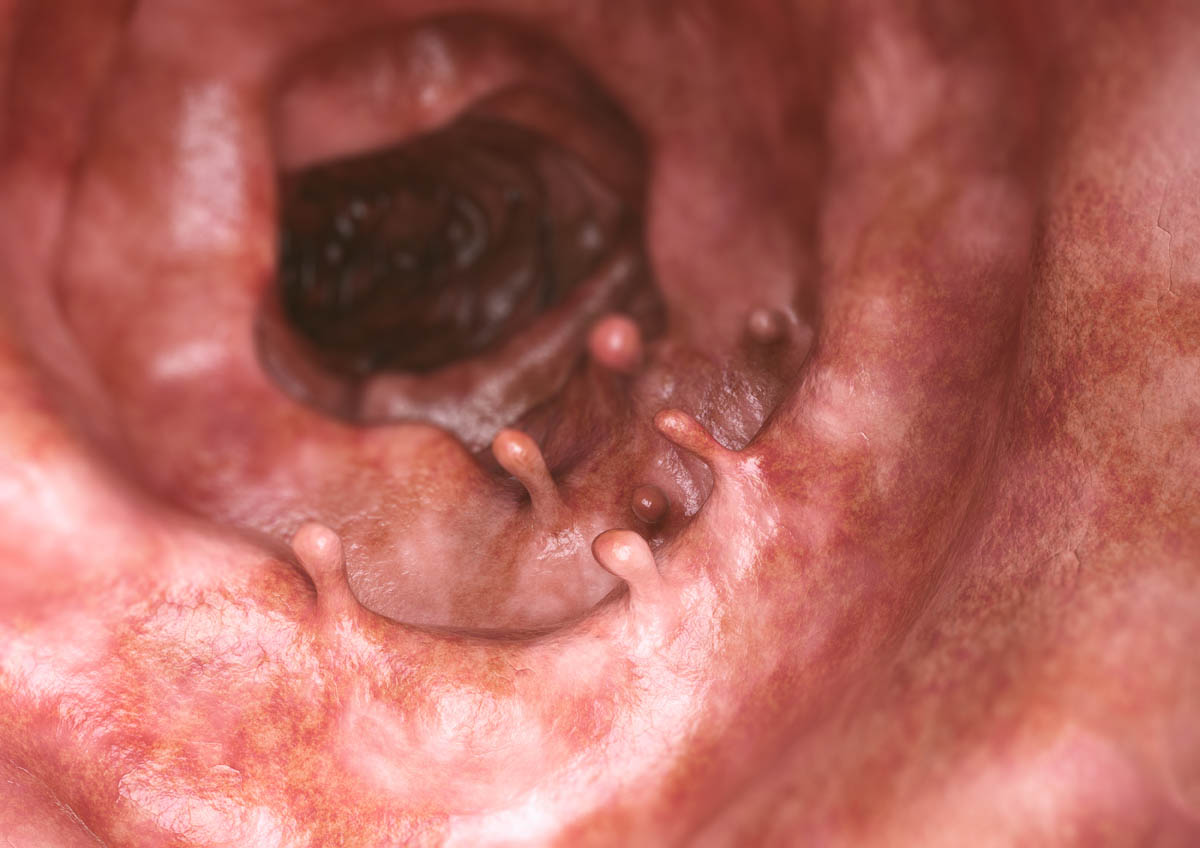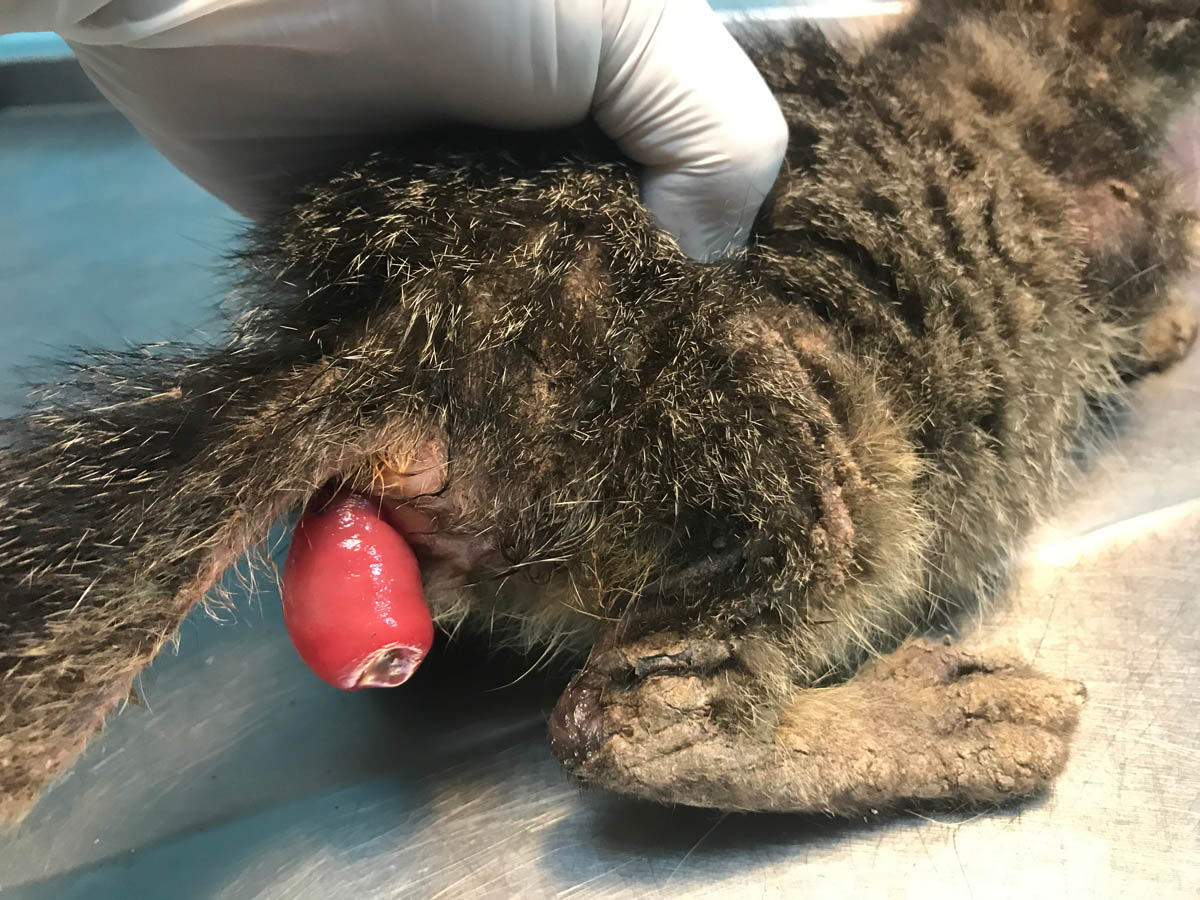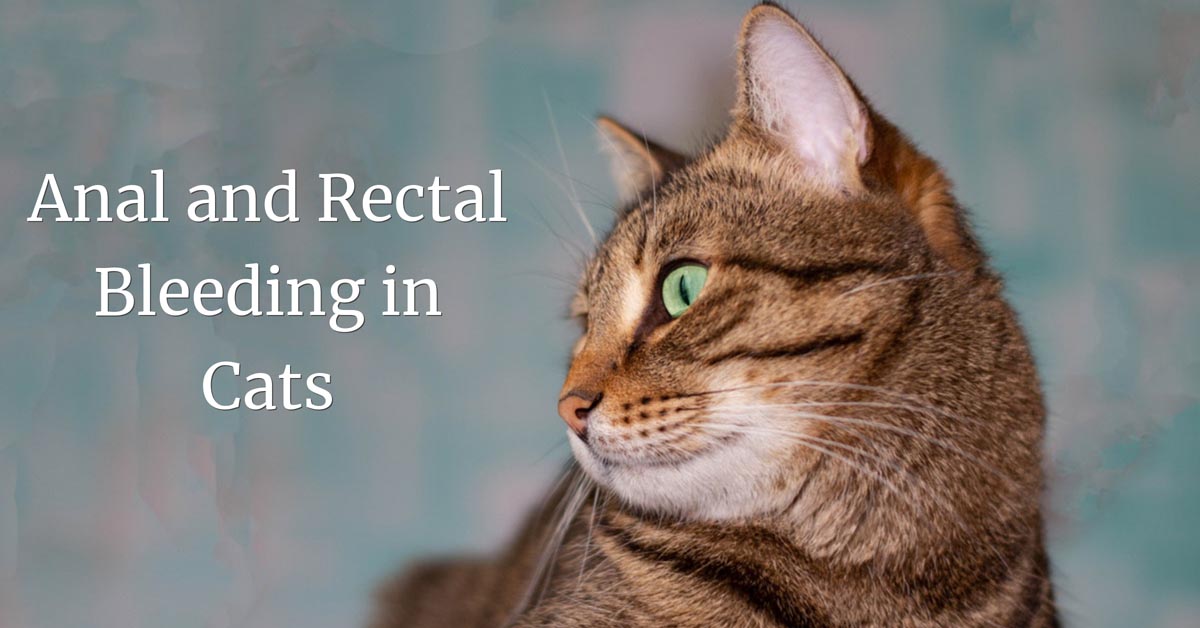Anal bleeding in catsAbout: Anal bleeding refers to blood from the anus, the rectum and which may be on the inside or outside of the feces. Causes:
Clinical signs: Depending on the underlying cause, but you may notice blood on the outside of the feces or within it, straining to go to the toilet, pain when defecating, mucus on or in the feces, anal scooting, hard, dry stools or diarrhea and pale gums. Diagnosis: Physical examination and medical history, accompanying symptoms and diagnostic tests which may include colonoscopy, medical imaging, routine blood and fecal studies. Treatment: This depends on the underlying cause but may include surgery, stool softeners, anti-worming medications, antibiotics and dietary changes. |
About
Anal and rectal bleeding refers to blood which may be noticed on or around the anus, the opening at the end of the cat’s digestive tract, or the rectum, which is the final section of the large intestine, inside the cat.
Pet owners may notice bright red blood on the anus, especially after a bowel movement, but more commonly blood is seen on or in the feces.
Causes
Blood can originate anywhere along the lower gastrointestinal tract, from the stomach and intestines (colon, rectum, anal canal) or externally, from the anus or the anal glands.
Impacted anal glands
The anal glands, which are at the 5 and 7 o’clock position on the cat’s anus, contain a clear, foul-smelling liquid that is released from the glands when the cat defecates. From time to time, the content in the glands can become thick and purulent, causing impaction and inflammation. Eventually, the glands will abscess and possibly rupture.
- Symptoms: Pain when defecating and the presence of blood in the feces or around the anus and an unpleasant smell.
- Treatment: Empty the glands and pack with antibiotic ointment. Your cat may need to go on a course of antibiotics. If the problem is recurrent, surgical removal of the glands may be necessary.
Constipation

From time to time, your cat may experience difficulty emptying his bowels. When this occurs, the feces can become dry and hardened. Constipation can develop in senior cats, dehydrated cats, cats on a low fibre diet, dirty litter trays which lead to holding onto the feces for longer than necessary, pelvic injury or abnormality, hypothyroidism and neurological disorders. Small tears can occur in the rectum when a constipated cat passes a stool.
- Symptoms: Crying in the litter tray, passing small amounts of feces, or straining to defecate.
- Treatment: Switch to a high fibre diet or add fibre to the food. Encourage water consumption by feeding a wet diet, provide more water bowls, or buy a water fountain, and in severely constipated cases, stool softeners or enema.
Rectoanal polyps

These types of polyps are uncommon in cats. Polyps are noncancerous nodular growths in the rectum or anus.
- Symptoms: Straining to defecate, blood in the stool and occasionally you may see a polyp protruding from the anus.
- Treatment: Surgical removal of the polyps. In some cases, polyps will return at a later date, which will require additional surgery.
Hookworm infection
Hookworms are small, thin nematodes that are approximately 10 to 20 mm in length and are a common intestinal parasitic worm of dogs but can also infect cats. They live in the duodenum, the first part of the small intestine, where they attach themselves to the mucous membrane using teeth-like hooks to feed on the blood. Worms change their point of attachment every 4-6 hours, which causes the area to bleed. Blood loss can lead to anemia, intestinal bleeding, intestinal inflammation, diarrhea and even death, particularly in young animals.
- Symptoms: Bloody stools which are often running, pale gums (due to anemia), and stunted growth in kittens.
- Treatment: Anti-parasitic medication to kill the worms.
Inflammatory bowel disease
A group of disorders caused by the infiltration of inflammatory cells (white blood cells) in the mucosa of the gastrointestinal tract. It can affect both the upper and lower intestinal tract.
- Symptoms: Chronic vomiting and diarrhea, sometimes with blood in it.
- Treatment: Management of these conditions with a highly digestible diet, immunosuppressive therapy, and antibiotics when needed.
Cancer
Also referred to as malignant neoplasms or malignant tumours, cancer is the uncontrolled division of cells that usually should be restrictive in their growth. Cancers can develop anywhere along the intestinal tract and rectum and can lead to bleeding.
Several kinds of cancer can cause anal bleeding, which includes mast cell tumour, lymphoma, adenocarcinoma, gastrointestinal stromal tumour, leiomyosarcoma, submucosal carcinomas, plasma cell tumour, anal cancer and hemangiosarcoma.
- Symptoms: Weight loss, vomiting, bloody diarrhea, anorexia, lethargy and abdominal mass.
- Treatment: Surgery to remove the growth if possible, chemotherapy or radiotherapy to shrink the tumour, slow down tumour growth or kill any remaining cells.
Colitis
Inflammation of the lining of the colon (large intestine) which have several causes including infection, stress, dietary, parasites or cancer.
- Symptoms: Diarrhea, which may contain blood, frequent passage of watery stools, reduced appetite.
- Treatment: The goal of treatment is to address the underlying cause. Severely affected cats will require hospitalisation and fluids. Food may be withheld for 24 hours to rest the colon. High fibre diet to increase stool bulk, anti-inflammatory medications. If scar tissue has developed, surgery will be necessary.
Gastroenteritis
Inflammation of the intestines, most commonly due to bacterial infections from salmonella, cryptosporidium, and E-coli.
- Symptoms: Vomiting, diarrhea, lethargy, loss of appetite and dehydration.
- Treatment: Antibiotics to kill the bacteria and supportive care such as fluids to treat dehydration and nutritional support. It may be necessary to feed a bland diet for several to rest the gastrointestinal tract.
Anal and rectoanal strictures
Strictures are a narrowing of the rectum or anus due to the development of scar tissue. Common causes include inflammation, abscess and surgical or accidental trauma.
- Symptoms: Blood in the urine or stool, ribbon-like stool, difficult and painful defecation.
- Treatment: Dietary management, stool softeners and medications to promote frequent defecation or bougienage and balloon dilation are to widen the passageway.
Rectal prolapse

Rectal prolapse is a rare condition that occurs when the rectum slips outside the cat’s anus. Causes include parasites, gastroenteritis, foreign bodies, straining due to constipation, disorders of the rectum, lower urinary tract disease, rectal tumours, dystocia and perineal hernia.
- Symptoms: A pink, elongated, cylindrical mass protruding from the anal opening as well as absent defecation.
- Treatment: Healthy rectal tissue can be manually moved back through the anus with the use of lubricants followed by a purse-string suture around the anus to prevent the prolapse from recurring.
Rectal tears
Tears can develop in the anus which may only affect the surface (partial) or penetrate all layers (complete). Rectal tears can be caused by a sharp object (cooked bone fragment, swallowed needle) that passes through the intestinal tract causing trauma.
- Symptoms: Straining to defecate, pain while defecating, blood in the stool, rectal bleeding and reluctance to defecate.
- Treatment: Clean and stitch closed the tear followed by antibiotics to prevent infection and stool softeners.
Symptoms
Blood may be visible on and around the anus, on the outside of or throughout the feces, additional symptoms will depend on the underlying cause.
- Anal scooting – Dragging the bottom along the floor.
- Difficulty defecating – Spending longer than normal in the litter tray or defecating outside the litter tray.
- Painful defecation – Crying in the litter tray or defecating outside the tray due to associating the litter box with pain.
- Swelling around the anus – Impacted anal glands or an anal gland abscess.
- Mucus in the stool – Inflammation or infection.
- Diarrhea – Loose, watery stools.
- Blood in the urine – Due to internal bleeding caused by blood clotting disorders.
Generalised symptoms:
- Lethargy
- Pale gums
- Loss of appetite
- Weight loss
Diagnosis
The veterinarian will perform a complete physical examination of your cat and obtain a medical history from you.
Questions you will be asked include:
- How long have symptoms of blood in the stool been present?
- Has the cat ingested any medication, prescribed or not?
- Have you noticed any additional symptoms, if so, what?
- Has the cat had recent exposure to rodenticides?
Diagnostic workup:
- Baseline tests – Biochemical profile, complete blood count, and urinalysis to evaluate organ function, check for signs of inflammation. Cats with thrombocytopenia will have low blood platelets, and anemia (low level of red blood cells) may also be present.
- Fecal evaluation – Microscopic fecal examination and fecal flotation to look for parasites in the stool.
- X-Ray or ultrasound – To look at the GI tract for tumours or polyps.
- Colonoscopy – This procedure involves the insertion of a fine tube with a camera at the end to evaluate the colon for signs of internal bleeding, inflammation, polyps, and cancer. Biopsies may be taken at this time for microscopic evaluation.
- Blood clotting tests – Such as coagulation assays, prothrombin time, activated partial thromboplastin time and thrombin time to evaluate the blood’s ability to clot.
- Bone marrow biopsy – To determine if thrombocytopenia is due to reduced production of platelets or increased use or destruction.

